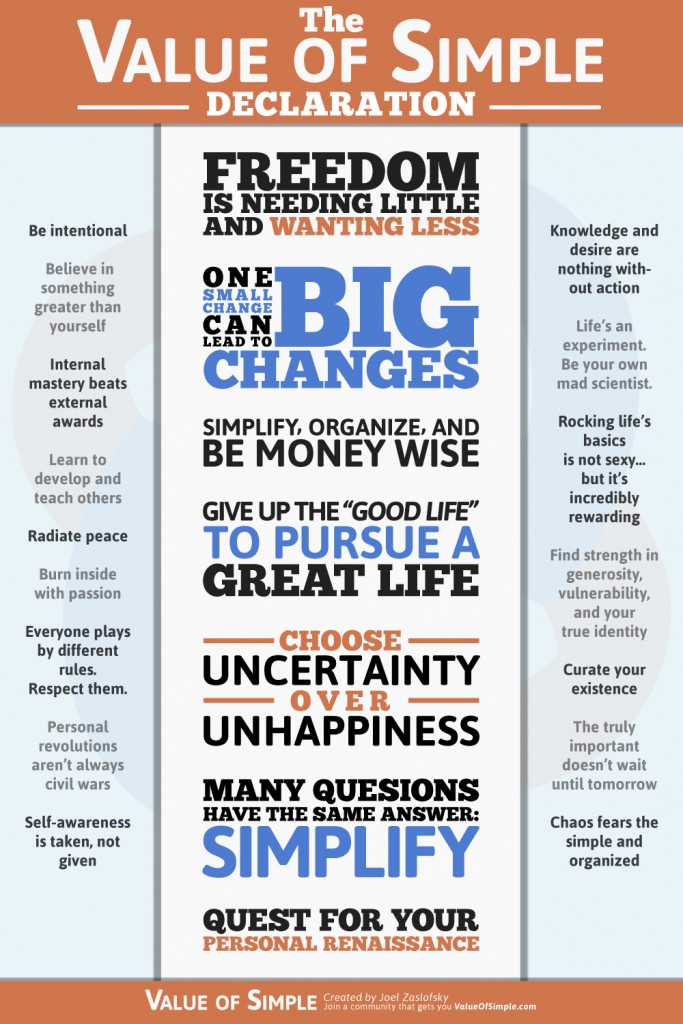Our current culture sets us up to approach life with a want more, need more stance that keeps families and schools filling children’s spaces and times with many activities. But does it really need to be that way? And do all those activities really make a difference in the grand scheme of academic success and well-being? Or can we aim for a more simplistic view that places understanding, relationship-building, and communication as our core goals? Shouldn’t engagement aim to recognize, celebrate, and enhance what we already have as families and as school communities? And how do we set our school communities on a path toward simplicity amidst the chaos and complexity of life?
A Note to School
It doesn’t seem to matter where I turn right now. There are more opportunities, more things to do, more required, more to consider, and more to get. Problem is, there is not enough time to do it all. What is really important? What can I reasonably say no to and not have it impact my child for the rest of their lives? What can I say no to and not feel judged by others who seem to manage it all? Can you help? What matters most?
A somewhat stressed but time-sensitive parent
To move forward, we have to dig deep into who we are, what we want, and how we would like to be viewed in the eyes of children, families, schools, and extended communities.
- What is it that families and schools optimally want for their children and students? How complex does it need to be?
- What would happen if we approached engagement with simplicity, kindness, and true understanding?
- How do we clear away the clutter of the urban legend of involvement and engagement in order to clear a path for what really matters?
- How do we create family and school spaces in a very chaotic world for children to be peaceful, mindful, and calm?
 Looking to the countless blogs on simplicity and minimalism, I relate a few of their basics to what we know about family-school engagement. Engaging families, engaging schools is really about interrogating the messages we send both hidden and explicit on a daily basis, and being intentional with our daily actions, using them to create the type of engagement we want in our schools. My goal is not to add to the already complex and cluttered lives of families and schools, but instead to create a culture of engagement that is characterized by simplicity, contentment, and optimism.
Looking to the countless blogs on simplicity and minimalism, I relate a few of their basics to what we know about family-school engagement. Engaging families, engaging schools is really about interrogating the messages we send both hidden and explicit on a daily basis, and being intentional with our daily actions, using them to create the type of engagement we want in our schools. My goal is not to add to the already complex and cluttered lives of families and schools, but instead to create a culture of engagement that is characterized by simplicity, contentment, and optimism.
Sounds easy right? I’d like to say yes, but with years of myths, urban legends, and potentially negative experiences behind us, it will take time and intentional action to move forward. Taking that very first step toward simplicity engagement, committing to that very first action of change, is likely the biggest one, as we never quite know how it will be answered or responded to.
But as we’ve heard so very often, “Nothing ventured, nothing gained!” So here we go…
 Check your mindset. Reconsider your engagement practices both at home and at school. What needs keeping? What can be set aside? What just keeps you busy instead of engaged? What I’ve learned now as a grandparent is that the most important thing we can give children is the gift of time and focused attention – set aside the technology, take a break, and just spend time as a family without the outside distraction of the world. Write down your goals, strengths, and needs: What do you want? What are you already good at? What do you need help with? Where will you begin? The Value of Simple, Slow Your Home, and Practising Simplicity, and Three Surprising Secrets to Creating Simplicity blogs are excellent places to start. And Simplicity Parenting by Kim John Payne is simply a wonderful read, reminding us of what is truly important: reducing stress on children and their parents and allowing room for connection, creativity, and relaxation (watch the video… it says it all!)
Check your mindset. Reconsider your engagement practices both at home and at school. What needs keeping? What can be set aside? What just keeps you busy instead of engaged? What I’ve learned now as a grandparent is that the most important thing we can give children is the gift of time and focused attention – set aside the technology, take a break, and just spend time as a family without the outside distraction of the world. Write down your goals, strengths, and needs: What do you want? What are you already good at? What do you need help with? Where will you begin? The Value of Simple, Slow Your Home, and Practising Simplicity, and Three Surprising Secrets to Creating Simplicity blogs are excellent places to start. And Simplicity Parenting by Kim John Payne is simply a wonderful read, reminding us of what is truly important: reducing stress on children and their parents and allowing room for connection, creativity, and relaxation (watch the video… it says it all!)
Accept yourself, accept others as they are. Recognize that we all have our own starting place. We need not focus on getting everyone to the same destination – our goal should be to simply accept families and schools as they are and move forward with unique strengths, needs, and sometimes limitations. Look for baby steps, and take them deliberately, mindfully, and intentionally, recognizing that there is always more that we can do.
Choose your direction and take that first step. Don’t make it bigger than it needs to be and make sure that it is something you can commit to. A constant start and stop (because of time, organization, or biting off more than you can chew) will set you back in terms of confidence. Make it small, fun, and meaningful. Families and schools can both send notes with their children (or email/text) that say, “Ask me about…”
Be accountable by recording your engagement actions. Write your goals down. Keep track of your progress. Check in with families and schools to see how you are progressing, what needs reconsidering, whether your plan is meeting the diverse communication needs of your school community. Being accountable to children, families, and school communities increases the likelihood that your change will be sustainable.
Practice gratitude. Thank you goes a long way and for the simple as well as the complex. Send a quick note or ask children to create a thank you card to recognize, value, and celebrate the work of their parents and/or school communities. Nothing too complex, just a simple message… Thanks for getting me to school on time each day, thanks for packing me a good lunch, thanks for being my teacher – I had a good day yesterday.
Do something unexpected. A random act of kindness or something unexpected goes a long way for both families and schools. Recognize busy times for families and schools by offering to help out. Send craft materials for a special occasion (e.g., Christmas, Mother’s/Father’s Day). Ask if there is anything that needs doing out of school. Call it a homework-free week (beneficial for schools and families!), invite families to visit the classroom and have children serve refreshments that they have prepared. Sometimes, the element of surprise has interesting ripple effects!
Take time to notice the little things. Let families and schools know that you are connected and responsive to children. If you see something interesting or newsworthy, take a picture, place a phone call, or send an email. Don’t just touch base in times of struggle, find times to celebrate as well… there are many!
Create positive school spaces at home and family spaces at school that help children make the connection between home and school. Have a designated space that allows you (as families and schools) to highlight and focus on the great things that happened at school and at home. Children will see the interconnectedness as they look at their school stuff at home (perhaps a class picture and a piece of work they are particularly proud of) and their family stuff at school (a class bulletin board with family pictures, objects, or stories for reference at different items throughout the school year).
Be prepared. Remember the girl guide/scout motto? Anticipate, be prepared, and stay organized. This will make mornings, transitions, hometimes, and bedtimes easier. Have a designated spot for things that move to and from school, encourage children to pack and unpack their own bags, ensure that those notes make it where they belong as well. Setting up a solid routine that puts kids in control will serve them well over their lifetimes. What better way to simplify than to remove the unpredictability that these moments sometimes bring?
 Commit to mindfulness and encourage children to do the same. Sometimes we get so very lost in the busy-ness of life that we forget to stop and take time to smell the flowers. Shut it all down and allow your self to take a break, if only for five minutes. Take a deep breath. Close your eyes, and use your five senses as a starting point. Touch: What can you feel at this very moment? Taste: What can you taste? Sound: What can you hear? Smell: Can you smell anything? Sight: Can you see anything? Children can be taught to experience a variety of things this way… even a raisin! It’s an exercise in slowing down and truly taking stock of what we have in this exact moment. Such exercises keep us in touch with the present moment rather than focusing on what-if, when, and why.
Commit to mindfulness and encourage children to do the same. Sometimes we get so very lost in the busy-ness of life that we forget to stop and take time to smell the flowers. Shut it all down and allow your self to take a break, if only for five minutes. Take a deep breath. Close your eyes, and use your five senses as a starting point. Touch: What can you feel at this very moment? Taste: What can you taste? Sound: What can you hear? Smell: Can you smell anything? Sight: Can you see anything? Children can be taught to experience a variety of things this way… even a raisin! It’s an exercise in slowing down and truly taking stock of what we have in this exact moment. Such exercises keep us in touch with the present moment rather than focusing on what-if, when, and why.
In this present moment, how do you envision family-school engagement?
Can we move toward a stance of simplicity instead of complexity?



Thanks for mentioning Value of Simple and displaying our Declaration, Michelann. I respect your mission and the way you’re using your influence to make an impact. Keep it up!